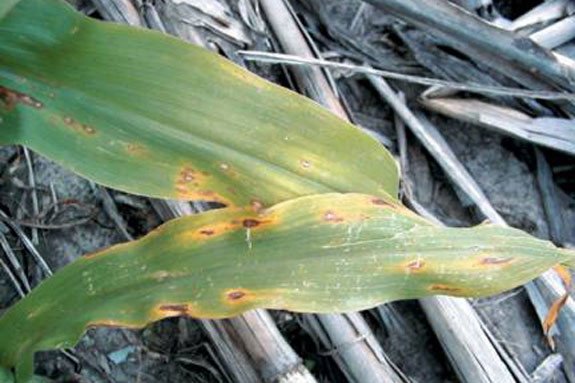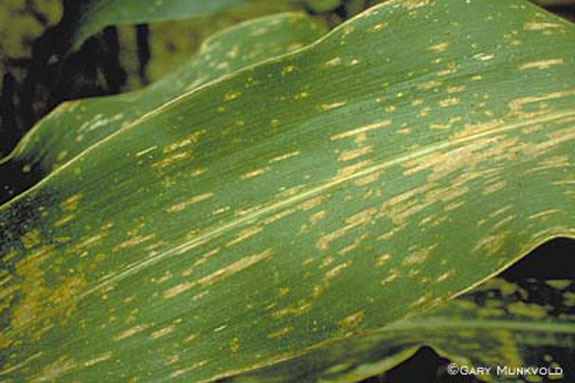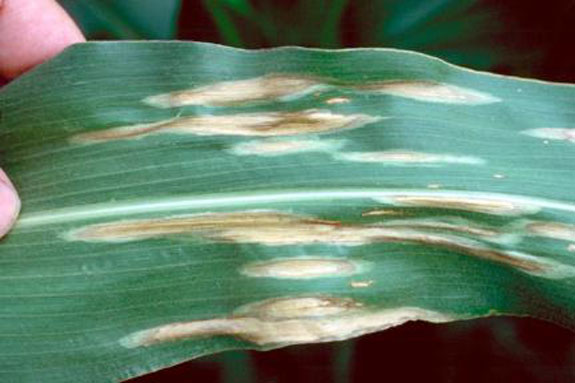Fields at the highest risk are corn on corn, corn hybrids with lower disease resistance levels, no-till fields and fields with limited air movement patterns such as river bottom fields.
These are fields that need to be monitored closely for disease development. Another issue this year are the later planted fields. These fields will be reaching the grain fill stage well after other fields and there will likely be lots of innoculum present from disease epidemics underway in earlier developing fields.
Yield losses are most severe when diseases such as grey leaf spot or northern corn leaf blight develop prior to pollination or early in the grain fill period.
Consequently, many of our later plantings may be exposed to these diseases at a critical period. It is impossible to make blanket recommendations on the potential severity of the disease or the statewide impact or management recommendations. Individual fields will need to be monitored for stand vigor, stage of maturity, disease presence and yield potential.
Another factor to consider will be the weather forecast before applying a fungicide. Typically, high-risk fields with good yield potential and a history of grey leaf spot or northern corn leaf blight have been the most responsive to a fungicide application. This year we may need to add the low-lying, later-planted fields to this high-risk category.
Symptoms of some common corn foliage diseases

Anthracnose: Lesions on the leaves tend to be brown, oval or spindle-shaped, about ¼ wide to ½ inch long, with yellowish to reddish-brown borders. Sometimes concentric rings or zones are apparent within the diseased areas. Common in no-till fields with corn residue.

Grey leaf spot : Early lesions from grey leaf spot are pale brown to reddish-brown and blocky to rectangular in shape when compared to other leaf blights. Lesions are typically restricted by leaf veins giving the lesions parallel edges for a “matchstick” appearance. Older lesions may have a grayish color. Lesions will eventually merge causing large areas of dead leaf tissue.

Northern corn leaf blight: Long, elliptical, grayish-green or tan lesions ranging from 1 to 6 inches in length, grey-green to tan in color. These lesions typically develop on the lower leaves and then move up and can affect leaves and ear husks. Eventually the disease causes the plant to look like it has been injured by frost. This disease has been increasing around the state and can result in a “frosted” appearance at the dent stage in the most severe cases. FG
—Source: Penn State Field Crop News, Vol. 11, No. 18
PHOTOS
Photos courtesy of Iowa State University Entomology department






